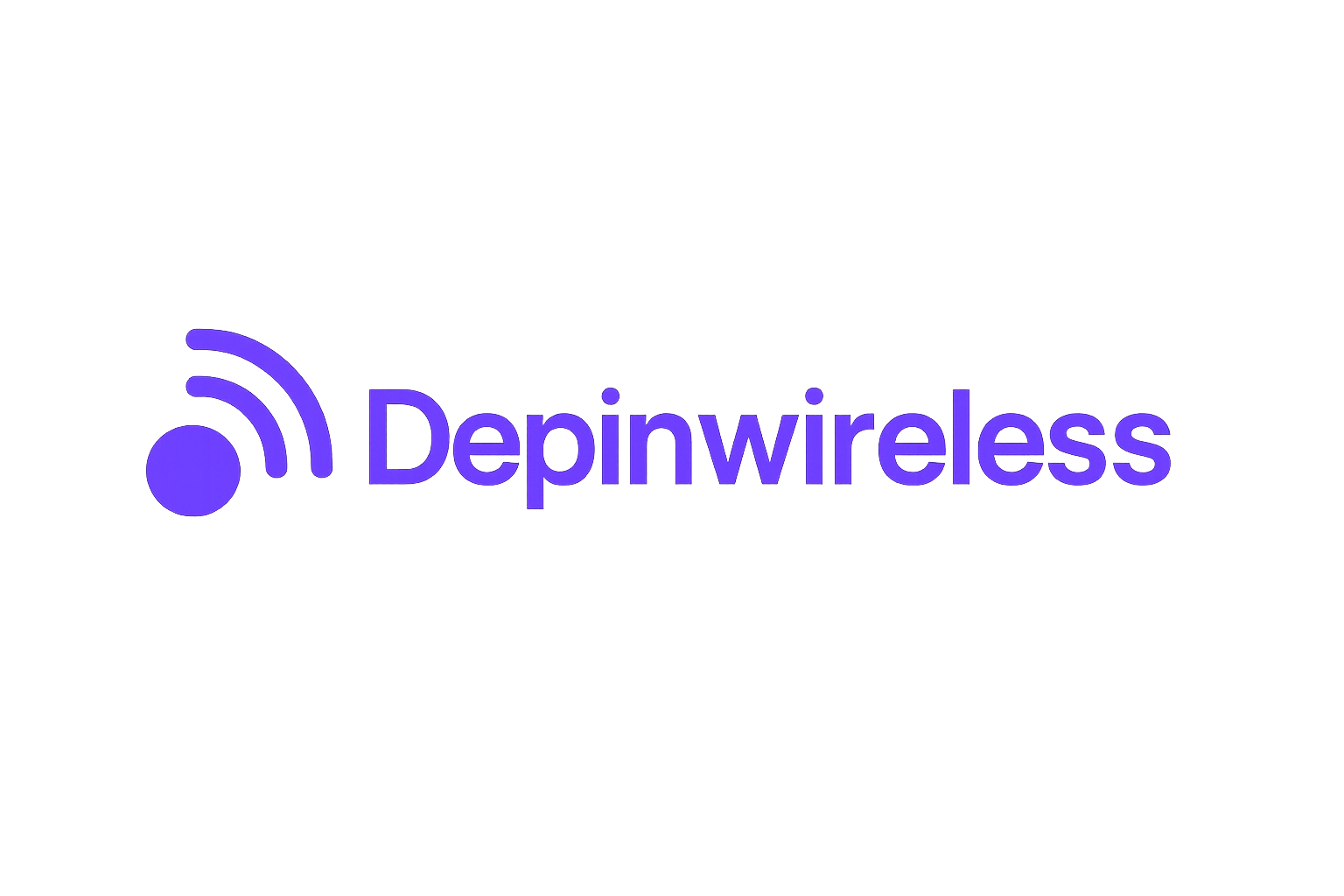
Helium’s decentralized wireless network has become a critical force in reshaping global 5G and IoT connectivity as of late 2025. At the heart of this transformation lies a sophisticated, data-driven tokenomics model that directly aligns economic incentives with network growth, reliability, and utility. With Helium Network Token (HNT) trading at $2.29 as of November 16,2025, Helium’s approach to blockchain-powered wireless infrastructure is setting new standards for both telecom incumbents and DePIN innovators.
The Mechanics Behind Helium’s Burn-and-Mint Equilibrium
Central to Helium’s tokenomics is the Burn-and-Mint Equilibrium (BME). This mechanism elegantly ties HNT supply to actual network usage. Whenever users or enterprises pay for data transfer, whether it’s IoT device telemetry or mobile 5G traffic, they must use Data Credits, which are created by burning HNT tokens. This means every byte sent over the Helium network directly reduces circulating HNT, establishing a deflationary pressure as adoption scales.
The BME model ensures that increased demand for wireless services translates into increased scarcity, and thus potential value, of HNT. In Q1 2025 alone, over 1,140.9 terabytes of data were transferred from major U. S. mobile carriers via Helium infrastructure, a staggering 138.6% quarter-over-quarter increase. As more data flows through the network, more HNT is burned to acquire Data Credits, reinforcing the economic feedback loop between real-world utility and token supply.
HIP 138: Simplifying Tokenomics for Scalable Growth
A pivotal moment arrived in January 2025 with the implementation of Helium Improvement Proposal 138 (HIP 138). Previously, different sub-networks (IoT and Mobile) used separate reward tokens and mechanisms. HIP 138 unified these under a single token, HNT, streamlining both rewards and utility across all networks.
This simplification has proven vital as Helium evolved into a true “Network of Networks. ” Operators no longer need to navigate multiple token economies; instead, every participant, from hotspot hosts powering urban 5G access points to rural IoT relay nodes, is rewarded in HNT. This clarity has accelerated both enterprise partnerships and grassroots deployment efforts.
Community-Driven Incentives Fueling Decentralized Expansion
The incentive structure underpinning Helium’s expansion remains fundamentally community-driven. Individuals and businesses are rewarded for deploying hotspots that extend coverage or densify existing networks. In return for providing reliable service validated by Proof-of-Coverage algorithms, operators earn HNT proportional to their contribution.
This model has delivered measurable results: by November 2025, the subscriber base surged to over 160,000 accounts, up 28.5% from the previous quarter. Strategic alliances with carriers like AT and T and Telefónica have further legitimized Helium’s decentralized approach while enabling massive offloading of carrier data traffic onto community-owned infrastructure.
Helium (HNT) Price Prediction 2026–2031
Professional forecast based on Helium’s evolving tokenomics, adoption trends, and market conditions as of late 2025
| Year | Minimum Price | Average Price | Maximum Price | Year-over-Year % Change (Avg) | Key Market Scenario |
|---|---|---|---|---|---|
| 2026 | $1.80 | $2.55 | $3.90 | +11% | Network expansion slows after rapid 2025 growth; consolidation phase; token burns offset by moderate demand. |
| 2027 | $2.10 | $3.15 | $5.20 | +24% | New enterprise/IoT partnerships and global expansion drive increased usage and HNT utility. |
| 2028 | $2.75 | $4.10 | $7.10 | +30% | Deflationary tokenomics take hold; more mobile data offloading, increased burn rate, and positive regulatory clarity. |
| 2029 | $3.50 | $5.05 | $10.20 | +23% | Major carrier integrations and DePIN (Decentralized Physical Infrastructure Networks) sector growth accelerate demand. |
| 2030 | $4.25 | $6.30 | $13.50 | +25% | Widespread 5G/IoT adoption, deeper DeFi integration, and limited new competition fuel bullish sentiment. |
| 2031 | $3.80 | $5.75 | $12.00 | -9% | Market matures; token price stabilizes as growth plateaus and competition from alternative DePIN networks emerges. |
Price Prediction Summary
Helium (HNT) is positioned for moderate-to-strong growth through 2030, fueled by deflationary tokenomics, expanding utility in 5G/IoT, and strategic partnerships. The average price is projected to rise from $2.55 in 2026 to $6.30 in 2030, with the potential for higher peaks in bullish scenarios. A stabilization phase is likely by 2031 as the DePIN sector matures.
Key Factors Affecting Helium Price
- Burn-and-Mint Equilibrium (BME) model directly linking network usage to token supply and price.
- HNT burn rate increases with higher network activity, incentivizing scarcity and price appreciation.
- Migration to Solana enhances scalability, DeFi integration, and technical efficiency.
- Strong partnerships with major carriers (e.g., AT&T, Telefónica) validate the decentralized model and expand market reach.
- Regulatory clarity and global expansion could spur large-scale enterprise adoption.
- Competition from other DePIN and IoT-focused networks may limit upside in later years.
- Potential macroeconomic headwinds and broader crypto market cycles will influence HNT price volatility.
Disclaimer: Cryptocurrency price predictions are speculative and based on current market analysis.
Actual prices may vary significantly due to market volatility, regulatory changes, and other factors.
Always do your own research before making investment decisions.
The fusion of blockchain incentives with real-world utility positions Helium as a leading case study in how DePIN wireless models can outcompete legacy telecom architectures on cost efficiency and scalability, especially when backed by robust tokenomics design.
Looking forward, Helium’s tokenomics model is engineered for adaptability as network demand and regulatory landscapes evolve. The burn-and-mint equilibrium ensures that the value of HNT remains closely correlated with actual wireless usage, not just speculative trading. As a result, Helium’s economic incentives continue to attract both retail participants and institutional partners seeking cost-effective 5G and IoT connectivity solutions.
Real-World Impact: From Urban 5G to Global IoT Coverage
The practical impact of Helium’s tokenomics is evident in its rapidly expanding footprint. Urban areas benefit from decentralized 5G coverage that can be deployed at a fraction of traditional infrastructure costs. Meanwhile, the same incentive structure drives coverage into underserved rural regions where legacy carriers have little economic motivation to build. This dual expansion is possible only because every new deployment, whether by an individual or enterprise, feeds into the same unified reward system powered by HNT.
Helium’s migration to the Solana blockchain in April 2023 has also unlocked new composability with DeFi protocols, allowing HNT holders to access lending, staking, and liquidity pools. This integration further amplifies the utility and velocity of HNT within the broader crypto ecosystem, reinforcing its role as both a network incentive and a digital asset.

Risks, Opportunities, and What Comes Next for Helium Tokenomics
Despite impressive growth metrics, such as Q1 2025’s 1,140.9 terabytes of data transferred and rising subscriber counts, Helium faces ongoing challenges. Regulatory scrutiny over spectrum use and telecom compliance could impact network operations in certain jurisdictions. Additionally, maintaining a sustainable balance between token supply deflation (via burns) and sufficient rewards for new deployments will require continual model refinement as adoption accelerates.
However, these risks are counterbalanced by significant opportunities. Strategic partnerships with global carriers not only validate Helium’s decentralized approach but also open doors for cross-border roaming agreements and enterprise IoT deployments at scale. The streamlined single-token model introduced by HIP 138 positions Helium to onboard new classes of users without friction, a critical advantage as demand for decentralized wireless surges.
Investor Takeaways: Tracking HNT at $2.29
For investors and operators alike, tracking HNT’s price at $2.29 offers a real-time barometer for network health and adoption velocity. The deflationary design means that as more data flows through the network, and as more enterprises leverage Helium for offloading carrier traffic, the circulating supply of HNT contracts over time.
This dynamic creates an environment where long-term holders are directly aligned with network growth metrics such as data transfer volume and subscriber count. Professional forecasts suggest potential upside if Helium maintains its current trajectory of technical innovation and partnership expansion.
- Key metric: Q1 2025 saw a 138.6% increase in data transferred compared to the previous quarter.
- User growth: Subscriber base reached 160,000 and , up 28.5%.
- Ecosystem integration: Solana migration enables DeFi composability for HNT holders.
The next phase will likely see more sophisticated incentive models layered atop core BME mechanics, potentially including dynamic Data Credit pricing or tiered rewards based on coverage quality, to further optimize resource allocation across geographies.
If you’re interested in how these innovations compare with other DePIN initiatives or want deeper analysis on decentralized wireless trends, explore our feature on Helium’s move to Solana and unified tokenomics.
Helium (HNT) Price Prediction 2026–2031
Professional Forecast Based on Tokenomics, Market Trends, and Network Growth
| Year | Minimum Price | Average Price | Maximum Price | Year-on-Year Change (Avg) | Market Scenario Insights |
|---|---|---|---|---|---|
| 2026 | $1.85 | $2.70 | $4.10 | +18% | Continued network growth, but potential volatility from broader crypto cycles. Regulatory clarity improves outlook. |
| 2027 | $2.10 | $3.25 | $5.80 | +20% | Expansion of 5G and IoT partnerships. Increased burn rate from higher network activity; bullish scenario if major carriers scale integration. |
| 2028 | $2.55 | $4.15 | $7.90 | +28% | Tokenomics deflationary effects become more pronounced. Broader adoption in enterprise IoT, but competition from other DePIN projects rises. |
| 2029 | $2.95 | $5.05 | $10.20 | +22% | Mature DePIN sector; Helium solidifies position as a leading decentralized wireless network. Potential regulatory headwinds could limit upside. |
| 2030 | $3.40 | $6.10 | $13.80 | +21% | Deflationary supply and utility-driven demand support higher prices. Bullish scenario assumes global partnerships and significant mobile adoption. |
| 2031 | $3.95 | $7.20 | $17.00 | +18% | Network achieves global scale. Maximum price reflects optimistic adoption and major enterprise integrations; minimum reflects potential market corrections. |
Price Prediction Summary
Helium (HNT) is projected to experience steady growth from 2026 through 2031, driven by its deflationary tokenomics, expanding network utility, and strategic partnerships in the 5G and IoT sectors. Average price predictions show a logical, progressive increase, reflecting both adoption trends and potential market volatility. The minimum and maximum price ranges account for bearish and bullish scenarios, respectively. Overall, Helium’s unique burn-and-mint equilibrium and real-world utility position it well for long-term value accrual, though competition and regulatory factors remain key considerations.
Key Factors Affecting Helium Price
- Burn-and-Mint Equilibrium (BME) driving deflationary token supply as network adoption increases.
- Strong partnerships with major telecom carriers (e.g., AT&T, Telefónica) expanding real-world use cases.
- Migration to Solana blockchain enhances scalability, DeFi integration, and network efficiency.
- Rising enterprise and consumer adoption of decentralized 5G and IoT connectivity.
- Potential regulatory developments affecting DePIN and crypto markets.
- Competition from alternative decentralized infrastructure projects.
- Macro crypto market cycles and overall investor sentiment.
Disclaimer: Cryptocurrency price predictions are speculative and based on current market analysis.
Actual prices may vary significantly due to market volatility, regulatory changes, and other factors.
Always do your own research before making investment decisions.





